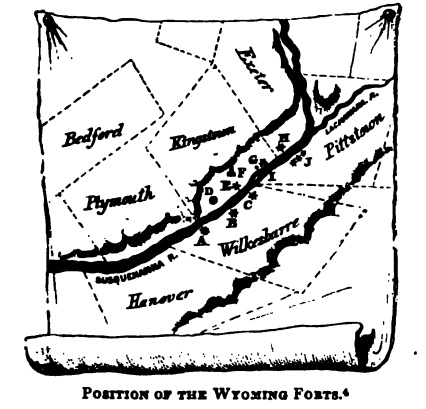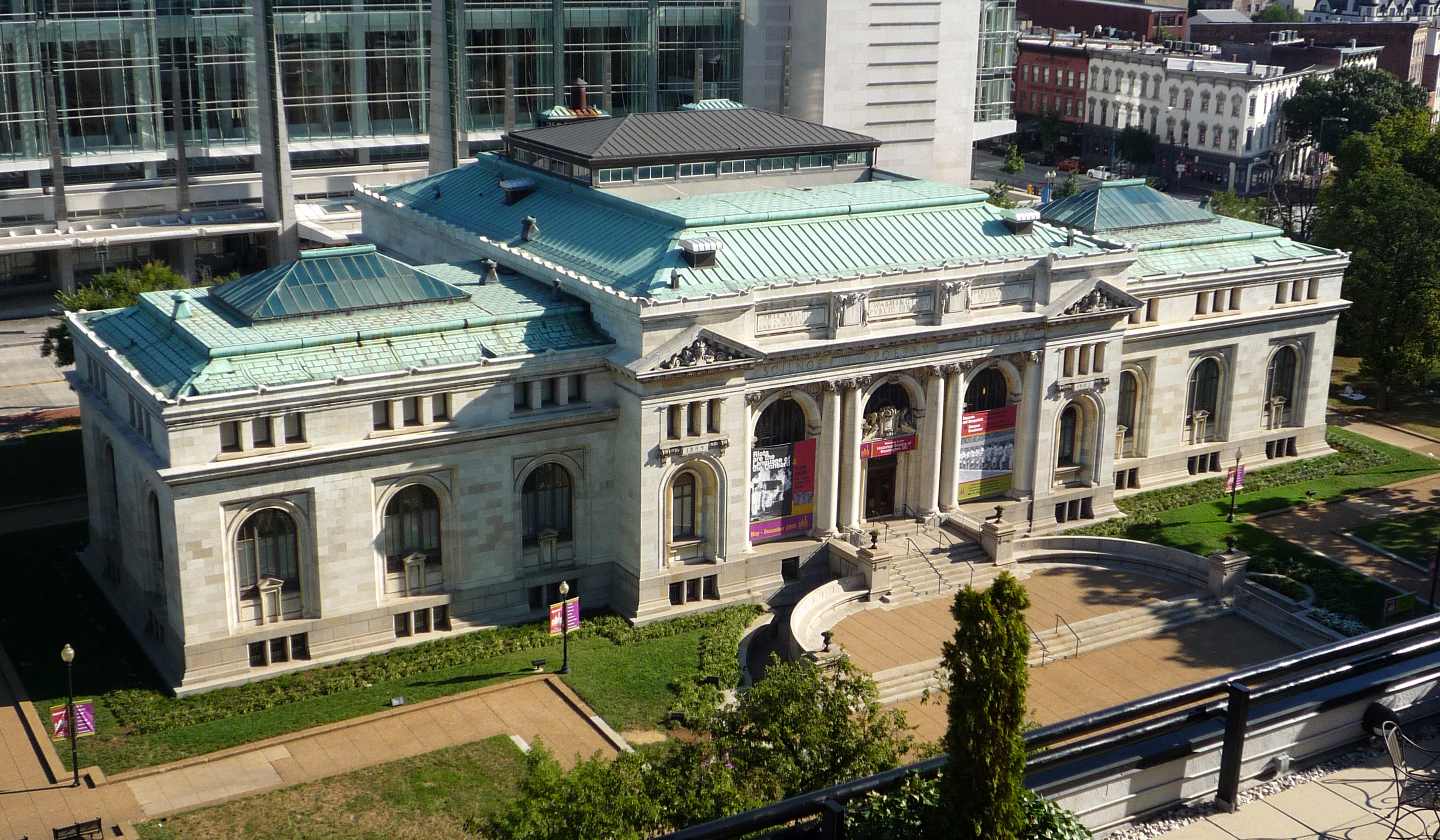|
Charles Henry Atherton
Charles Henry Atherton (June 24, 1932December 3, 2005), FAIA, was an American architect and former secretary of the U.S. Commission of Fine Arts from 1960 to 2004. Early life Atherton was born in Wilkes-Barre, Pennsylvania on June 24, 1932, the son of Brigadier General Thomas Henry Atherton (18841978) and Mary Kidd Mish (19001981). His father was an accomplished architect whose notable works included the Pennsylvania Memorial in Varennes-en-Argonne in France. Atherton was educated at Princeton University, receiving both an undergraduate degree in architecture in 1954 and a Master of Fine Arts in architecture in 1957. Career After graduation he served in the U.S. Naval Civil Engineering Corps and worked as an architect for the Central Intelligence Agency for three years. He joined the United States Commission of Fine Arts (CFA) in 1960 as Assistant Secretary and was named Secretary in 1965 after Linton Wilson’s retirement. By 1987 he was referred to in the New York Times as E ... [...More Info...] [...Related Items...] OR: [Wikipedia] [Google] [Baidu] |
Architect
An architect is a person who plans, designs and oversees the construction of buildings. To practice architecture means to provide services in connection with the design of buildings and the space within the site surrounding the buildings that have human occupancy or use as their principal purpose. Etymologically, the term architect derives from the Latin ''architectus'', which derives from the Greek (''arkhi-'', chief + ''tekton'', builder), i.e., chief builder. The professional requirements for architects vary from place to place. An architect's decisions affect public safety, and thus the architect must undergo specialized training consisting of advanced education and a ''practicum'' (or internship) for practical experience to earn a Occupational licensing, license to practice architecture. Practical, technical, and academic requirements for becoming an architect vary by jurisdiction, though the formal study of architecture in academic institutions has played a pivotal role in ... [...More Info...] [...Related Items...] OR: [Wikipedia] [Google] [Baidu] |
National Endowment For The Arts
The National Endowment for the Arts (NEA) is an independent agency of the United States federal government that offers support and funding for projects exhibiting artistic excellence. It was created in 1965 as an independent agency of the federal government by an act of the U.S. Congress, signed by President Lyndon B. Johnson on September 29, 1965 (20 U.S.C. 951). It is a sub-agency of the National Foundation on the Arts and the Humanities, along with the National Endowment for the Humanities, the Federal Council on the Arts and the Humanities, and the Institute of Museum and Library Services. The NEA has its offices in Washington, D.C. It was awarded Tony Honors for Excellence in Theatre in 1995, as well as the Special Tony Award in 2016. In 1985, the NEA won an honorary Oscar from the Academy of Motion Picture Arts and Sciences for its work with the American Film Institute in the identification, acquisition, restoration and preservation of historic films. In 2016 and again in 2 ... [...More Info...] [...Related Items...] OR: [Wikipedia] [Google] [Baidu] |
Architects From Pennsylvania
An architect is a person who plans, designs and oversees the construction of buildings. To practice architecture means to provide services in connection with the design of buildings and the space within the site surrounding the buildings that have human occupancy or use as their principal purpose. Etymologically, the term architect derives from the Latin ''architectus'', which derives from the Greek (''arkhi-'', chief + ''tekton'', builder), i.e., chief builder. The professional requirements for architects vary from place to place. An architect's decisions affect public safety, and thus the architect must undergo specialized training consisting of advanced education and a ''practicum'' (or internship) for practical experience to earn a license to practice architecture. Practical, technical, and academic requirements for becoming an architect vary by jurisdiction, though the formal study of architecture in academic institutions has played a pivotal role in the development of the ... [...More Info...] [...Related Items...] OR: [Wikipedia] [Google] [Baidu] |
2005 Deaths
This is a list of deaths of notable people, organised by year. New deaths articles are added to their respective month (e.g., Deaths in ) and then linked here. 2022 2021 2020 2019 2018 2017 2016 2015 2014 2013 2012 2011 2010 2009 2008 2007 2006 2005 2004 2003 2002 2001 2000 1999 1998 1997 1996 1995 1994 1993 1992 1991 1990 1989 1988 1987 See also * Lists of deaths by day The following pages, corresponding to the Gregorian calendar, list the historical events, births, deaths, and holidays and observances of the specified day of the year: Footnotes See also * Leap year * List of calendars * List of non-standard ... * Deaths by year {{DEFAULTSORT:deaths by year ... [...More Info...] [...Related Items...] OR: [Wikipedia] [Google] [Baidu] |
1932 Births
Year 193 ( CXCIII) was a common year starting on Monday (link will display the full calendar) of the Julian calendar. At the time, it was known as the Year of the Consulship of Sosius and Ericius (or, less frequently, year 946 ''Ab urbe condita''). The denomination 193 for this year has been used since the early medieval period, when the Anno Domini calendar era became the prevalent method in Europe for naming years. Events By place Roman Empire * January 1 – Year of the Five Emperors: The Roman Senate chooses Publius Helvius Pertinax, against his will, to succeed the late Commodus as Emperor. Pertinax is forced to reorganize the handling of finances, which were wrecked under Commodus, to reestablish discipline in the Roman army, and to suspend the food programs established by Trajan, provoking the ire of the Praetorian Guard. * March 28 – Pertinax is assassinated by members of the Praetorian Guard, who storm the imperial palace. The Empire is auctioned off ... [...More Info...] [...Related Items...] OR: [Wikipedia] [Google] [Baidu] |
Luzerne County
Luzerne County is a county in the U.S. state of Pennsylvania. According to the U.S. Census Bureau, the county has a total area of , of which is land and is water. It is Northeastern Pennsylvania's second-largest county by total area. As of the 2020 census, the population was 325,594, making it the most populous county in the northeastern part of the state. The county seat and largest city is Wilkes-Barre. Other populous communities include Hazleton, Kingston, Nanticoke, and Pittston. Luzerne County is included in the Scranton–Wilkes-Barre–Hazleton Metropolitan Statistical Area, which has a total population of 555,426 as of 2017. On September 25, 1786, Luzerne County was formed from part of Northumberland County. It was named after Chevalier de la Luzerne, a French soldier and diplomat during the 18th century. When it was founded, Luzerne County occupied a large portion of Northeastern Pennsylvania. From 1810 to 1878, it was divided into several smaller counties. Th ... [...More Info...] [...Related Items...] OR: [Wikipedia] [Google] [Baidu] |
Forty Fort
Forty Fort was a stronghold built by settlers from Westmoreland County, Connecticut, on the Susquehanna River in Luzerne County, Pennsylvania. During the American Revolutionary War, both Connecticut and Pennsylvania claimed this territory, as Connecticut laid claim to a wide swath of land to its west based on its colonial charter. These competing claims were settled by exchanges and agreements with resolution by the national government after the United States gained independence. This fort became a refuge for displaced settlers during the Battle of Wyoming The Battle of Wyoming, also known as the Wyoming Massacre, was a military engagement during the American Revolutionary War between Patriot militiamen and a mixed force of Loyalist soldiers and Iroquois raiders. The clash took place in the Wyom ... in 1778. Zebulon Butler's force of Continental and allied Indians was defeated by the far larger force of Loyalists and their Indian allies. References {{reflist Forts in ... [...More Info...] [...Related Items...] OR: [Wikipedia] [Google] [Baidu] |
Washington National Cathedral
The Cathedral Church of Saint Peter and Saint Paul in the City and Diocese of Washington, commonly known as Washington National Cathedral, is an American cathedral of the Episcopal Church. The cathedral is located in Washington, D.C., the capital of the United States. The structure is of Neo-Gothic design closely modeled on English Gothic style of the late fourteenth century. It is the second-largest church building in the United States, and the third-tallest building in Washington, D.C. The cathedral is the seat of both the Presiding Bishop of the Episcopal Church, Michael Bruce Curry, and the bishop of the Diocese of Washington, Mariann Edgar Budde. Over 270,000 people visit the structure annually. The Protestant Episcopal Cathedral Foundation, under the first seven Bishops of Washington, erected the cathedral under a charter passed by the United States Congress on January 6, 1893. Construction began on September 29, 1907, when the foundation stone was laid in the presenc ... [...More Info...] [...Related Items...] OR: [Wikipedia] [Google] [Baidu] |
Fellow Of The American Institute Of Architects
Fellow of the American Institute of Architects (FAIA) is a postnominal title or membership, designating an individual who has been named a fellow of the American Institute of Architects (AIA). Fellowship is bestowed by the institute on AIA-member architects who have made outstanding contributions to the profession through design excellence, contributions in the field of architectural education, or to the advancement of the profession. In 2014, fewer than 3,200 of the more than 80,000 AIA members were fellows. Honorary Fellowship of the American Institute of Architects, Honorary Fellowship (Hon. FAIA) is awarded to foreign (non-United States nationality law, U.S. citizen) architects, and to non-architects who have made substantial contributions to the field of architecture or to the institute. Categories Fellowship is awarded in one of six categories: *Design *Practice management or technical advancement *Leadership *Public service *Volunteer work or service to society *Education a ... [...More Info...] [...Related Items...] OR: [Wikipedia] [Google] [Baidu] |
American Institute Of Architects
The American Institute of Architects (AIA) is a professional organization for architects in the United States. Headquartered in Washington, D.C., the AIA offers education, government advocacy, community redevelopment, and public outreach to support the architecture profession and improve its public image. The AIA also works with other members of the design and construction community to help coordinate the building industry. The AIA is currently headed by Lakisha Ann Woods, CAE, as EVP/Chief Executive Officer and Dan Hart, FAIA, as 2022 AIA President. History The American Institute of Architects was founded in New York City in 1857 by a group of 13 architects to "promote the scientific and practical perfection of its members" and "elevate the standing of the profession." This initial group included Cornell University Architecture Professor Charles Babcock, Henry W. Cleaveland, Henry Dudley, Leopold Eidlitz, Edward Gardiner, Richard Morris Hunt, Detlef Lienau, [...More Info...] [...Related Items...] OR: [Wikipedia] [Google] [Baidu] |
Columbia Historical Society
The Historical Society of Washington, D.C., also called the DC History Center, is an educational foundation dedicated to preserving and displaying the history of Washington, D.C. The society provides lectures, exhibits, classes, and community events. It runs a museum, library, and publishes the journal ''Washington History''. It had been named The Columbia Historical Society from its founding in 1894 until 1988. The society's home is the Carnegie Library of Washington D.C., a Beaux-Arts building in the center of Mount Vernon Square in Washington. It was built in 1902 to be District of Columbia Public Library, one of the many Carnegie libraries. The building is open to the public from Monday through Sunday 10am to 5pm. Visitors can tour the exhibits and use the society's Kiplinger Research Library, which has books, maps, photographs, and other materials relevant to the history of the city. ''Washington History'' The society publishes a peer-reviewed academic journal ''Washing ... [...More Info...] [...Related Items...] OR: [Wikipedia] [Google] [Baidu] |





